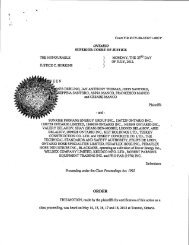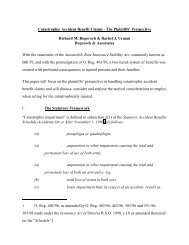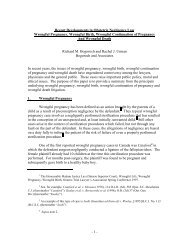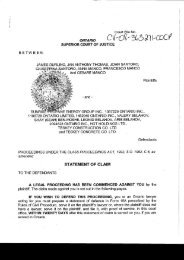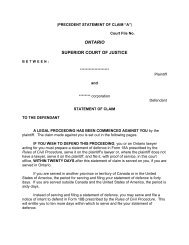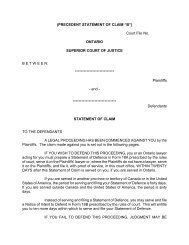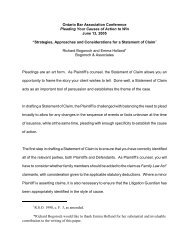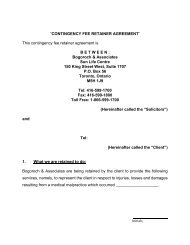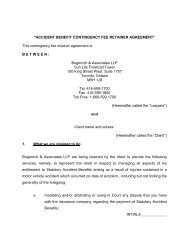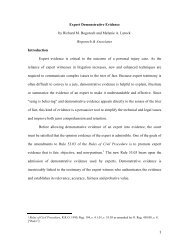Understanding and Managing the Increase in Chronic Claims and ...
Understanding and Managing the Increase in Chronic Claims and ...
Understanding and Managing the Increase in Chronic Claims and ...
You also want an ePaper? Increase the reach of your titles
YUMPU automatically turns print PDFs into web optimized ePapers that Google loves.
−4−3. The chief compla<strong>in</strong>t is of severe <strong>and</strong> prolonged pa<strong>in</strong> <strong>in</strong> excess of what couldbe expected on <strong>the</strong> basis of organic f<strong>in</strong>d<strong>in</strong>gs.4. At least six of <strong>the</strong> factors listed below are exhibited:(a) Diagnosis of a soft tissue <strong>in</strong>jury;(b) Multiple symptom compla<strong>in</strong>ts, e.g. headaches, fatigue;(c) An unsuccessful attempt to return to work;(d) Guarded movements or avoidance of many activities, e.g. an <strong>in</strong>validlike life-style;(e) Ingestion of multiple analgesics, tranquilizers, etc.(f) Frequent <strong>and</strong> multiple physician contacts;(g) Development of family <strong>and</strong> marital problems;(h) A reduction <strong>in</strong> or loss of libido;(i) Diffuse anger, frustration <strong>and</strong> irritability;(j) Anxiety <strong>and</strong>/or depressive symptoms;(k) Sleep disturbance.”<strong>Chronic</strong> Pa<strong>in</strong> Syndrome is a condition <strong>in</strong> which chronic pa<strong>in</strong> has persisted over a period of time <strong>and</strong>is <strong>in</strong>tense enough that it substantially <strong>in</strong>terferes with a person’s ability to function <strong>and</strong> to carry on hisor her activities of daily liv<strong>in</strong>g. <strong>Chronic</strong> pa<strong>in</strong> erodes <strong>the</strong> sufferer’s confidence, self-esteem, <strong>and</strong>general well-be<strong>in</strong>g. 5 The def<strong>in</strong><strong>in</strong>g feature here is <strong>the</strong> fact that <strong>the</strong> chronic pa<strong>in</strong> has rendered <strong>the</strong> pa<strong>in</strong>sufferer vocationally <strong>and</strong>/or functionally disabled.The difficulty medical professionals have encountered with <strong>Chronic</strong> Pa<strong>in</strong> Syndrome is that it oftenhas what Dr. Manish S<strong>in</strong>gh, an Assistant Professor at Pennsylvania Hahnemann University, hasdescribed as hav<strong>in</strong>g, “a convoluted natural history, unclear etiology <strong>and</strong> often responds poorly tovarious <strong>the</strong>rapies” 6 . Accord<strong>in</strong>g to Dr. S<strong>in</strong>gh, some authors have even stated that <strong>Chronic</strong> Pa<strong>in</strong>Syndrome may be a learned behavioral syndrome. The suggestion is that <strong>the</strong>re may be an <strong>in</strong>itialnoxious56M<strong>in</strong>nesota Board of Medical Practice Update Newsletter, Spr<strong>in</strong>g 1997<strong>Chronic</strong> Pa<strong>in</strong> Syndrome, Manish K. S<strong>in</strong>gh M.D., http://www.e-medic<strong>in</strong>e.com



